24 Amazing, Homemade Dungeons & Dragons Maps
Roll for incredible adventure maps. Natural 20.
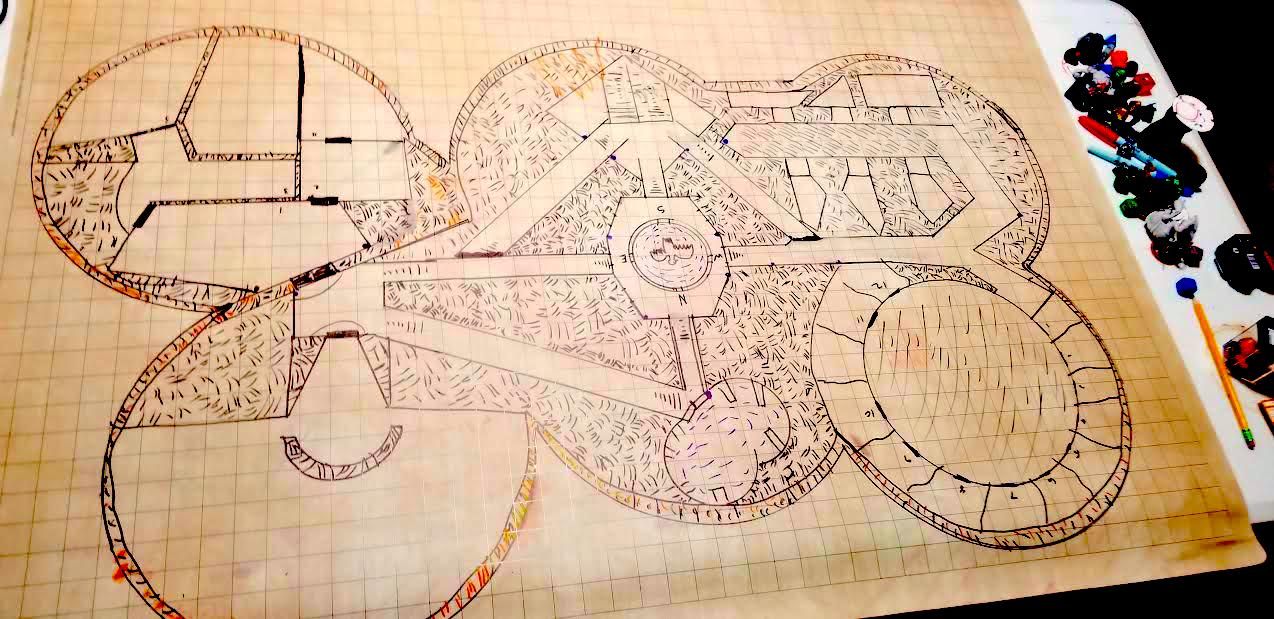
Last week we asked Atlas Obscura readers to send us their greatest DIY Dungeons & Dragons maps. It was a critical success.
We received dozens of fantasy adventure maps illustrating the amazing worlds in our readers’ imaginations. From a hand-drawn city nestled inside a giant turtle shell, to a computer-illustrated continent, to a “Paraelemental Plane of Ooze” that’s honestly a little too real, your D&D maps are more incredible than we could have imagined. Every single one calls out for exploration.
We’ve collected a number of our favorite submissions below. So tighten your sword belts! Shine your pauldrons! Ready your wards and enchantments! The adventure begins below!

Troll Cistern
“A troll and its wererat cronies have taken renowned author Winston Jonrosh captive, forcing him to write their version of his next great novel. This map was heavily inspired by the 1990 film, Misery. At the bottom of the map, you’ll see Jonrosh tied to a bed, ankles destroyed so he remains focused on writing for the perverted troll holding him captive.” — Robin Johnson, St. Louis, Missouri
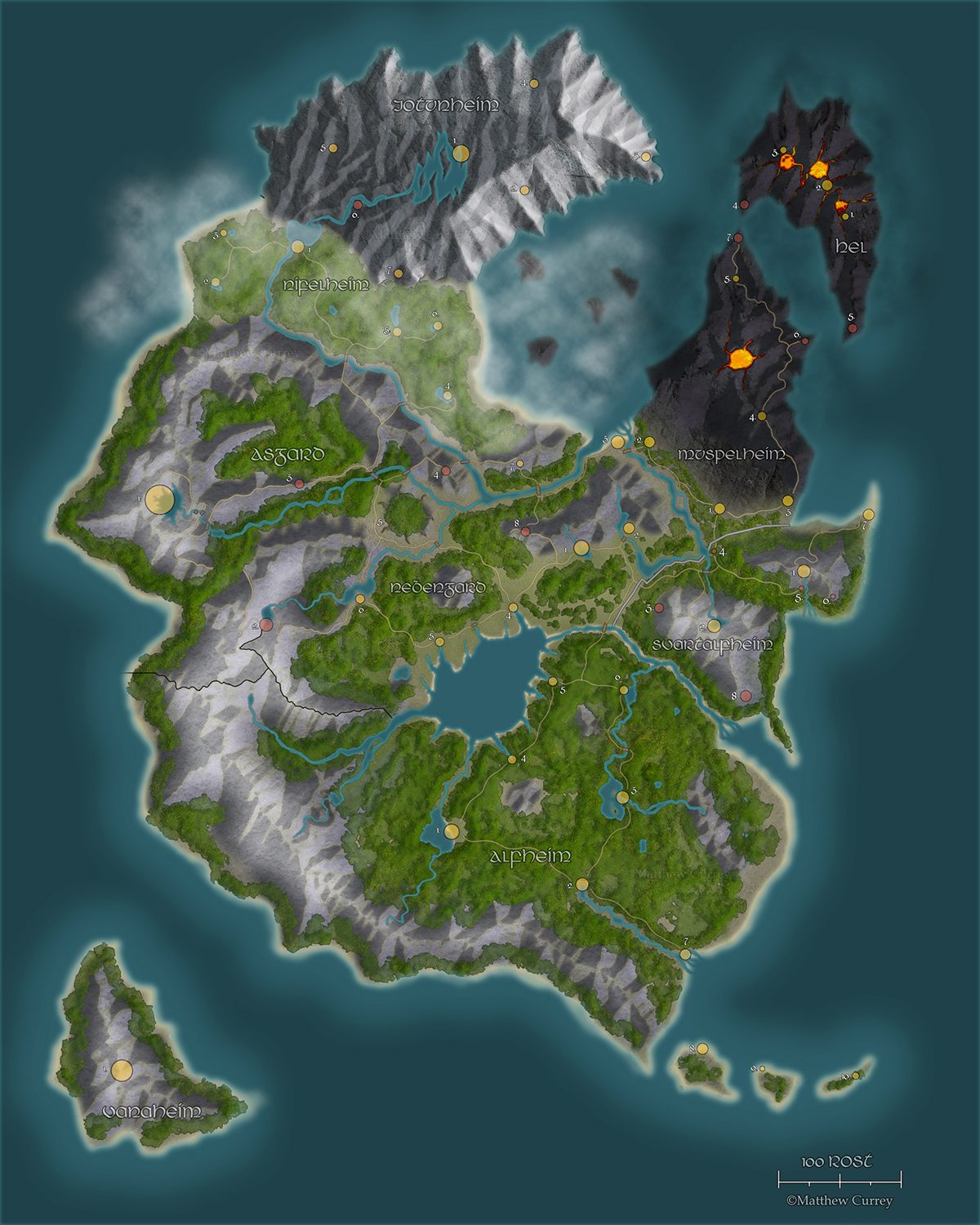
New Asgard
“In my modern urban fantasy campaign I decided to strand my players for quite some time on an alternate Asgard, one in which all the realms were on one landmass. This version of Asgard exists after Ragnarok destroyed their original cosmology. The refugees from that set of planes came to Earth’s cosmology and settled on this plane on which which they divided the single continent up, and now live in relative peace. It took my players almost a year (four months in-game) to walk from the tip of Svartalfheim through Nebengard, to Asgard, then through Niflheim and Jotunheim to get all the materials necessary to repair their damaged Bifrost key so they could activate the Bifrost to head back to Chicago.” — Matthew Currey, Illinois
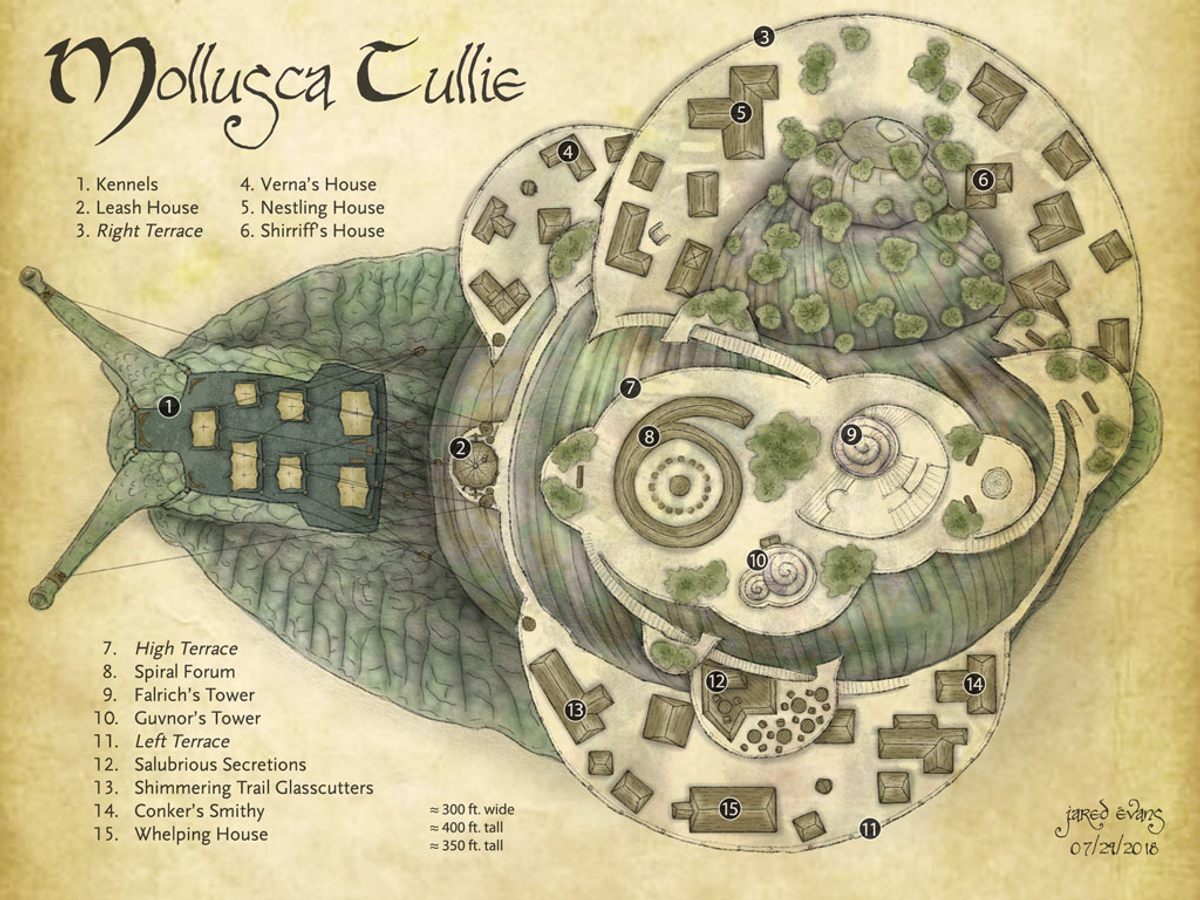
Mollusca Tullie
“Mollusca Tullie (to the East, in the Unfathomed Fens) is actually a small settlement of nomadic halflings—built on the back of a giant snail. They defend the snail with their mastiff cavalry and in exchange, the snail provides its shell as a shelter.” — Jared Evans, Wichita, Kansas
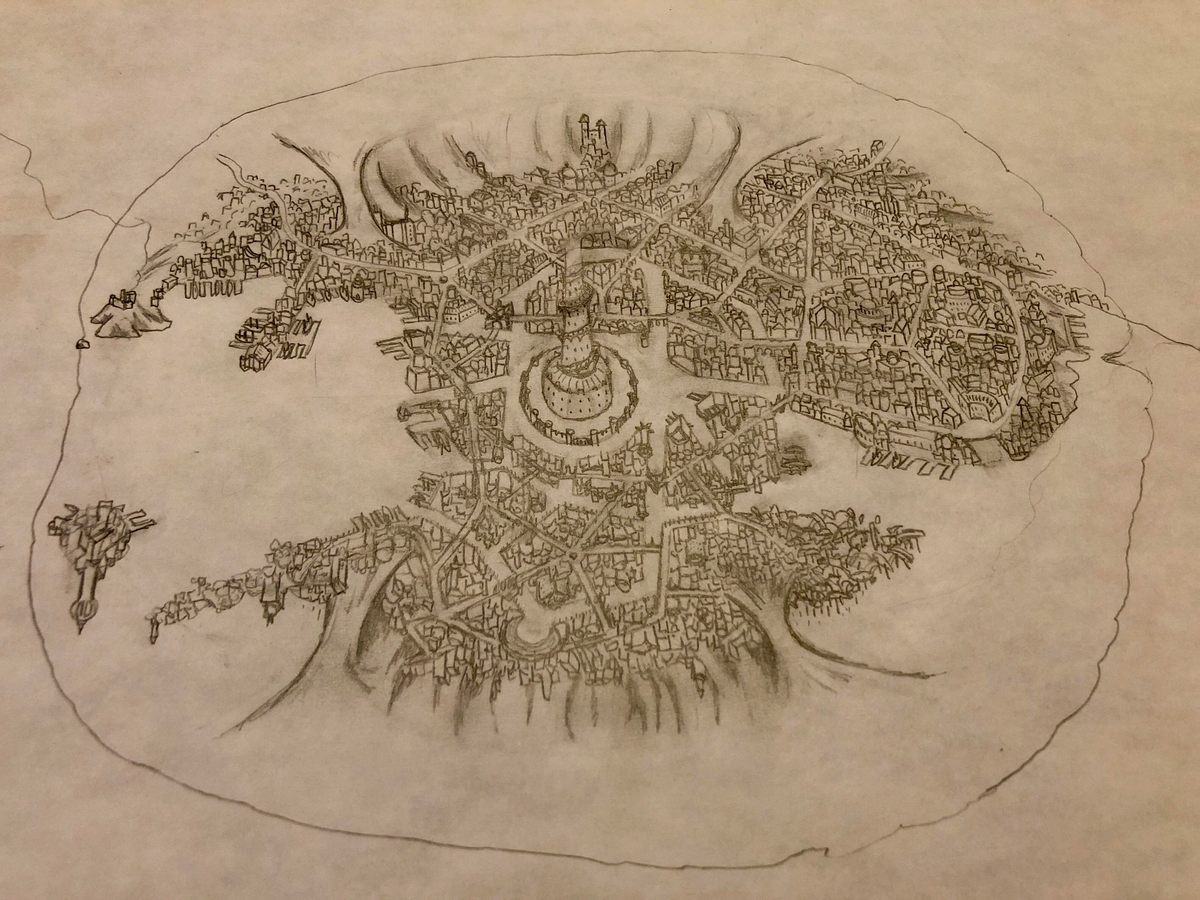
The Brineshell
“The Brineshell is a high-fantasy medieval city built within and atop the shell of a colossal sea turtle; washed ashore and half submerged in the coast. The dichotomy of wealth and class is starkly illustrated here, with only aristocracy and royals gracing the perfect cobblestone streets of the Topside, while the poor and working class carve out a hard life in The Belly, a driftwood city built on rotting piers and ruled by rival crime syndicates.
My favorite feature of the map is the isometric style that allowed me to capture the cavern-like quality of The Belly. Turning the map 180 degrees, the perspective flips to display the sea-side of the giant turtle shell. The shell itself was modeled after a real turtle shell that lives on the bookshelf above my D&D books.” — Josh Unruh, Nashville, Tennessee
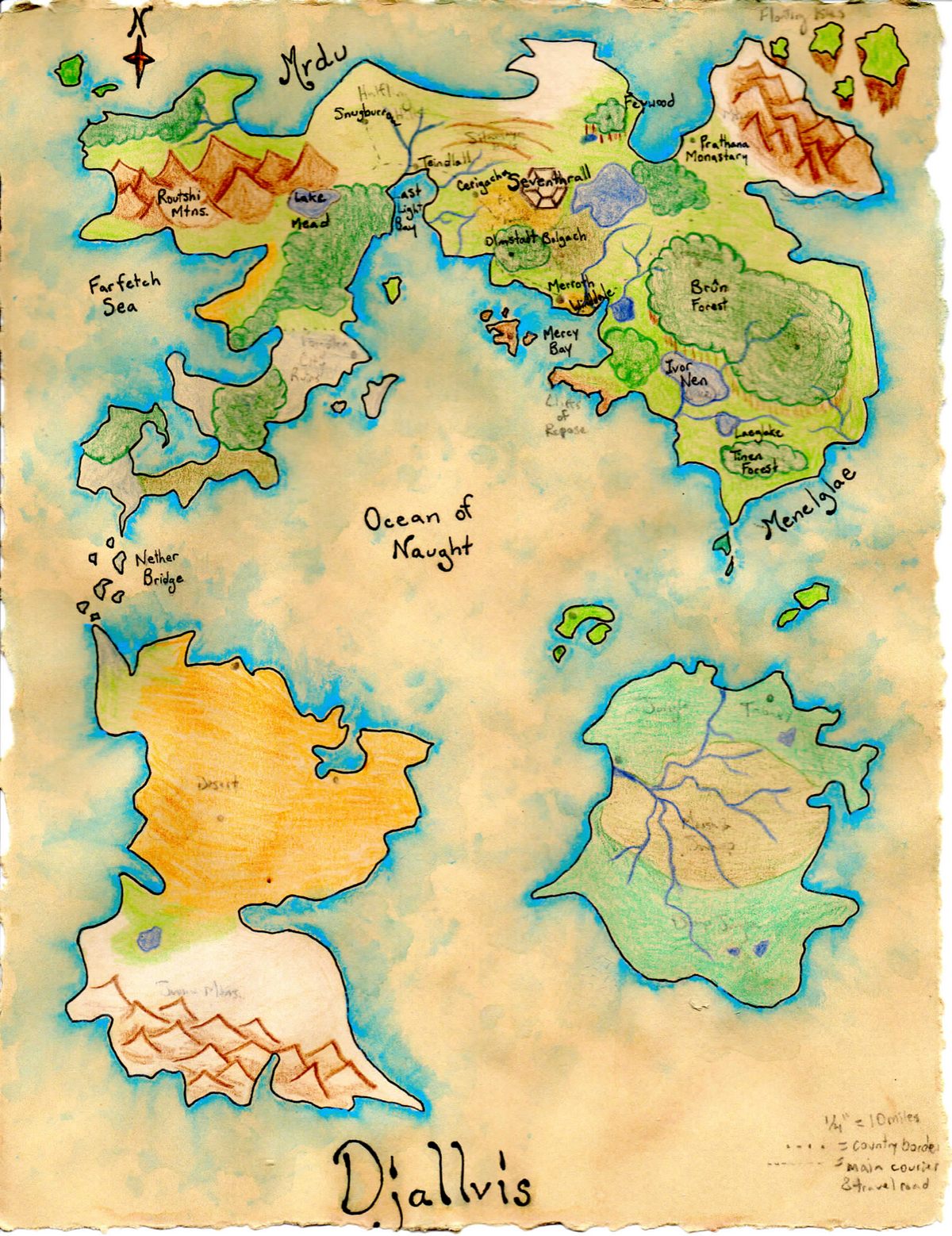
Djallvis
“Inspired by wanting to use the themes and races of the D&D 5th edition world, but put my own spin on it. I created Djallvis, which I imagine to be in the same world, but in a different hemisphere. The major differences tend to be in the creatures, which can be as different from the 5th edition creatures as Australian kangaroos are from America buffalo. There are many more cities and locations in my world than appear on the map, simply because I didn’t want to give too many spoilers to my players when they started.” — Bella, U.S.

The Secret of Ozikanoba
“I wondered how baby Earth Elementals were born. Players are held captive by slavers living on the island, but one of the slaves can read the ancient writings. Soon after, this slave is taken away by the Slave Lords, secretly she interprets the writings, but in doing so, slowly finishes a ritual that hastens the birth of the elemental. Volcanic amniotic lava fluids and mayhem result. The players have to escape from the island as it blows apart.” — Keith Armour, London, Ontario

The Lich Brothers’ Tomb
“The adventurers think they are searching an old tomb for info they need, but the two Lich Brothers (who hate each other even though they share this dungeon) try to use the party to kill each other.” — Dan Roy, Maine
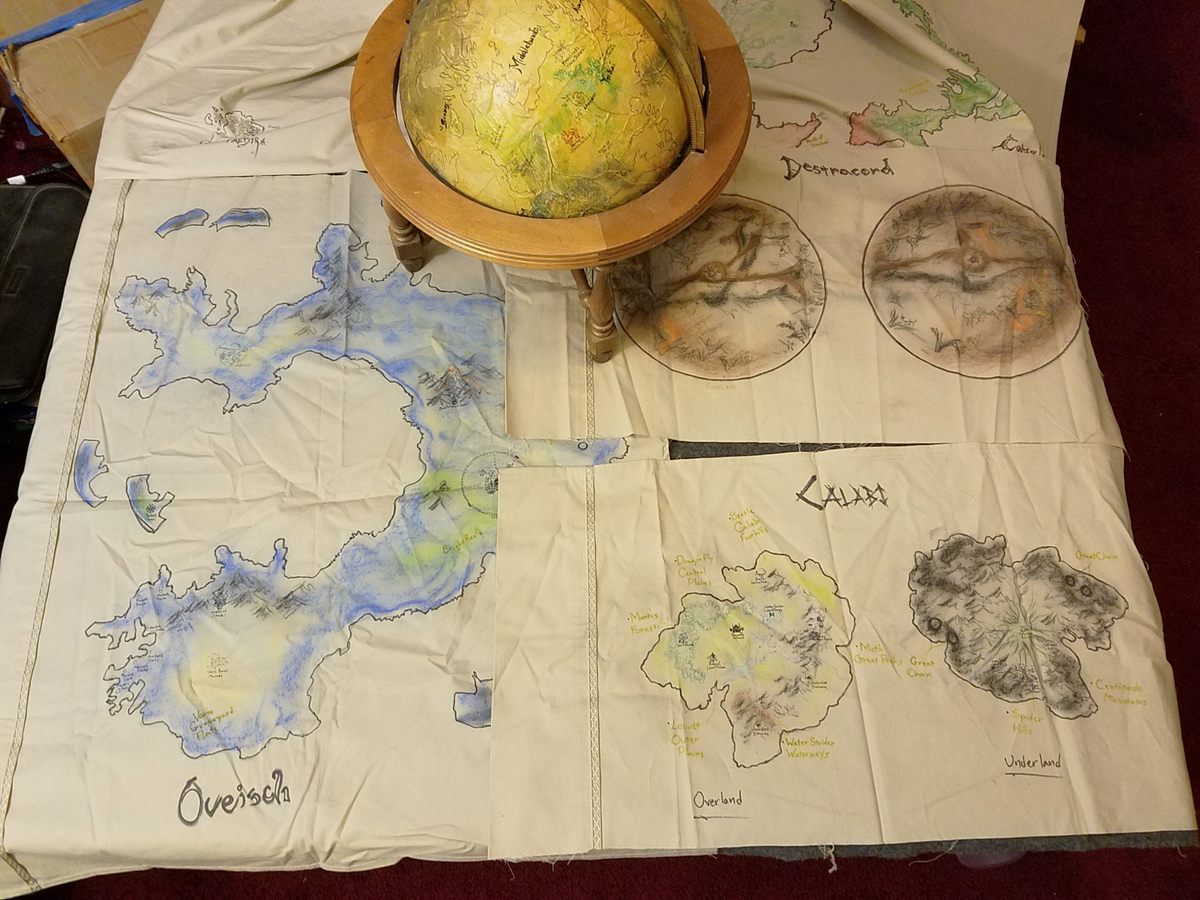
Trials of Tascori’
“It’s a series of small stories that got built into a larger world from when I started DMing my own campaign in high school. It started on sheets of paper, but soon graduated to queen-sized bedsheets, a globe, and pillowcases that denoted the floating, underwater, and planet’s core continents. The whole planet itself is a ‘dragon egg,’ which is really just a curled up, ossified, gigantic being in space, of indeterminate features and origin, and it had ‘Sentinels’ all over it that acted as stewards for ‘artifacts’ that ended up being its organs. The Sentinels themselves didn’t even know the true nature of the artifacts, just knowing they were put there to protect them at all costs. Weird, super sentient centipede dudes with manticore faces, dragon critters with translucent tube skin, behemoth psionic sauropodians from the dawn of time. Very Lovecraftian. The idea was that when the space-fetus awoke, it would act as a kind of organic mechanism with which to start a chain of events that led to the formation of a new universe. Thereby collapsing our own.
I thought it was GENIUS when I was 16.” — Mike Michalski, Chicago

Seb DeLarge’s Thieves’ Guild Hideout
“It’s a small setting, but useful in that it can either serve as a mini-dungeon if the players try to storm it to stage a rescue or robbery, or explore it as a potential base or safe house if they gain the Guild’s trust.” — Patsy, Berlin

The Infinite Library of Zuul
“This is ‘The Infinite Library of Zuul,’ a dungeon that has quite a surprise. In the room marked 9, the library proper where the librarian hangs out, there are four doors that cross through the dimensions to six possible different locations that determine the creatures that inhabit the earlier parts of this dungeon. They range from a necromancer’s troupe of skeletons to vicious plants that will eat an unassuming rogue alive. The system I’m developing it for is Labyrinth Lord, a replica of the Basic and Expert books of Dungeons & Dragons.” — Pete Segreti, New York

The Black Crow Inn
Submitted by Robert Matthews

Wizard’s Tower
“This map was something I did for Inktober and definitely plan on including in a future adventure. My favorite thing about it is the front-view, I think it adds a lot to it to be able to visualize it in that way. Floating landmasses are also always cool, right?” — Patrick McGill, Lexington, Kentucky
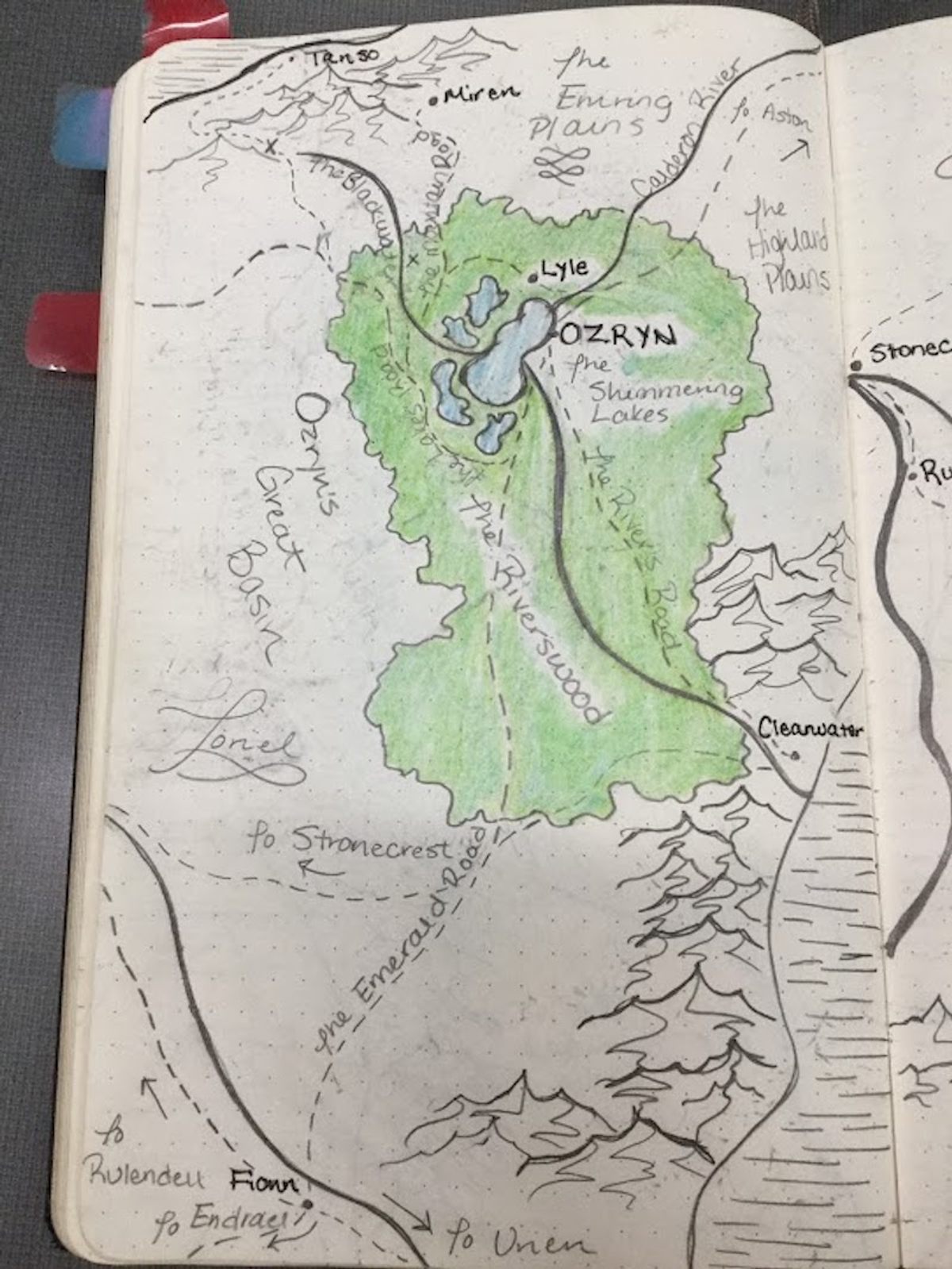
Middle Map of Toriel
“I’m my Dungeon Master’s ‘Assistant,’ so I take the sketches of his world and turn them into maps. We spend a lot of time talking about the weather patterns his world might have, as well as the aesthetic he wants. I’m a college student with a math major, so sometimes I model the maps off of graphs I’ve created in class. By far my favorite features are the mountains and coastlines, naturally, these take me the longest to make.” — Tia Barnes, Westcliffe, Colorado

The Chain Cult
“This is a very simple map that was inspired by ‘The Chain,’ the fourth in the prompt list for this year’s Mapvember challenge.” — Luis Gimeno, Valencia, Spain

Map of Anaevin
“This is a geographic map of an area my players are wandering through for my homebrew setting. A few of my favorite places are Fitzgerald’s Wreck (a nod to Canadian Balladeer Gordon Lightfoot’s ‘Wreck of the Edmund Fitzgerald’), and Olah, a semi-sentient island that is thought by the locals to be the resting place of those they’ve lost at sea. The Ean Lair is also fun, being a submerged amphitheater for a cephalopod race that lives in the area. Thanks for the opportunity to share.” — Shea Manweiler, Wainwright, Alberta

Westpeak
“This map was used for the setting of my 14-month-long campaign full of intrigue and deceptions. Westpeak was a kingless city of crime and corruption. Each of its noble houses wanting to exert their own influence over the city in an effort to claim the throne. One of its more notable locations was island on the west side of the city, the Mage’s ‘Academy’ where those showing signs of magical talent were sent to receive training, under careful watch. It was also the location of the campaign’s final encounter against a necromancer who had used the city’s turmoil as a cover for his nefarious deeds.” — Jeffry Gabert, Edmonton, Alberta
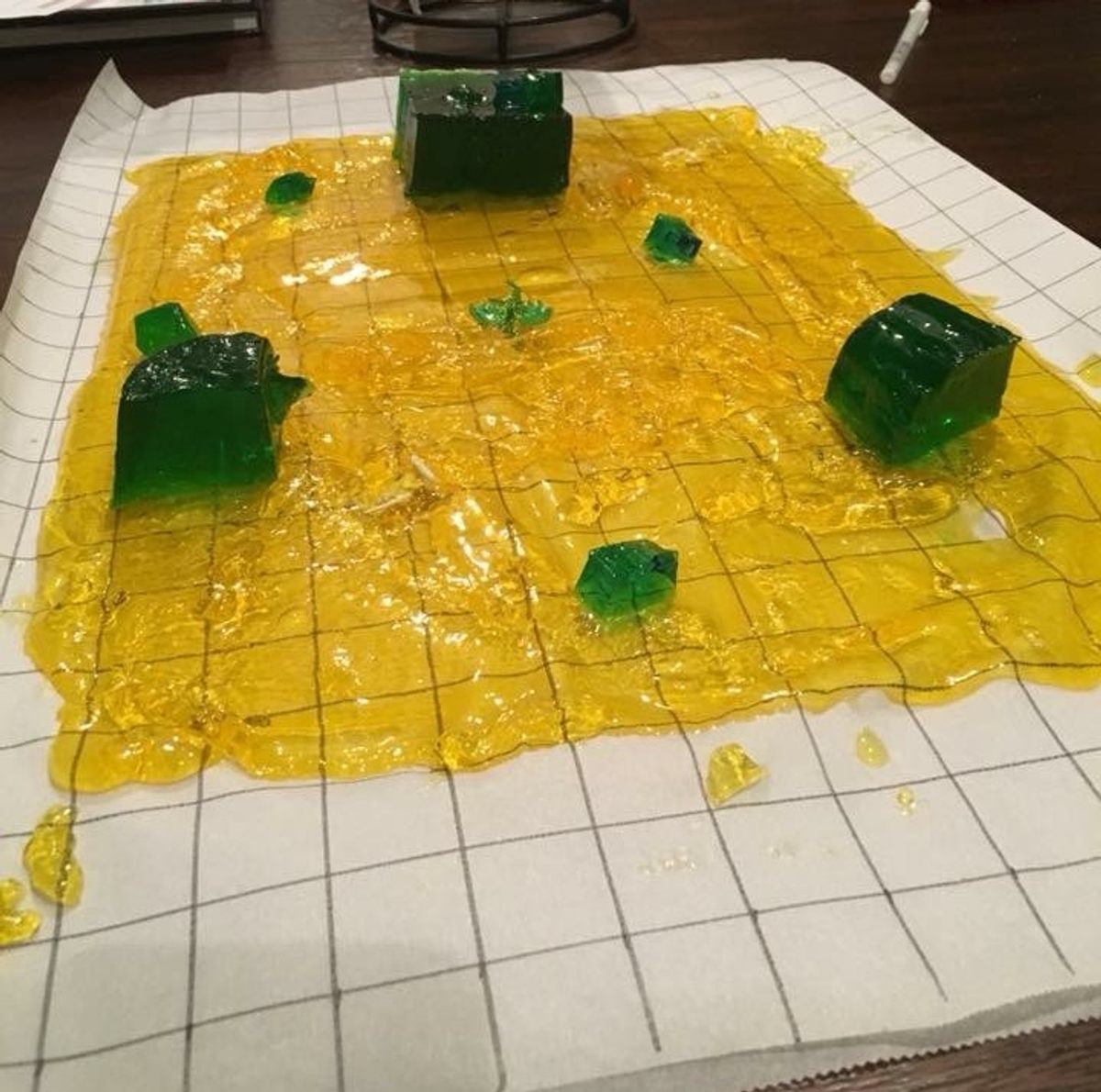
The Paraelemental Plane of Ooze
“I’m running a Planescape game right now, and the party ended up taking a garbage chute portal to the Paraelemental Plane of Ooze. The map itself is jello, as are the gelatinous cubes trying to digest the party. I drew the grid on parchment paper and then flipped a cookie sheet of jello onto it. If I did this again in the future I might try using pectin for jam making. It resulted in a firmer game mat during my test the night before but it does take much more time to set. The jello map and cubes were made the day of. The players loved it. There was a dragon and two kobold minis encased in the ooze, along with the the treasures that the party was after. The party freed the dragon (by literally reaching in and digging it out with their fingers) and it fought with them. Moving their minis around the table made a satisfying squish and pop every time.” — Autumn Nicole Bradley, Wisconsin
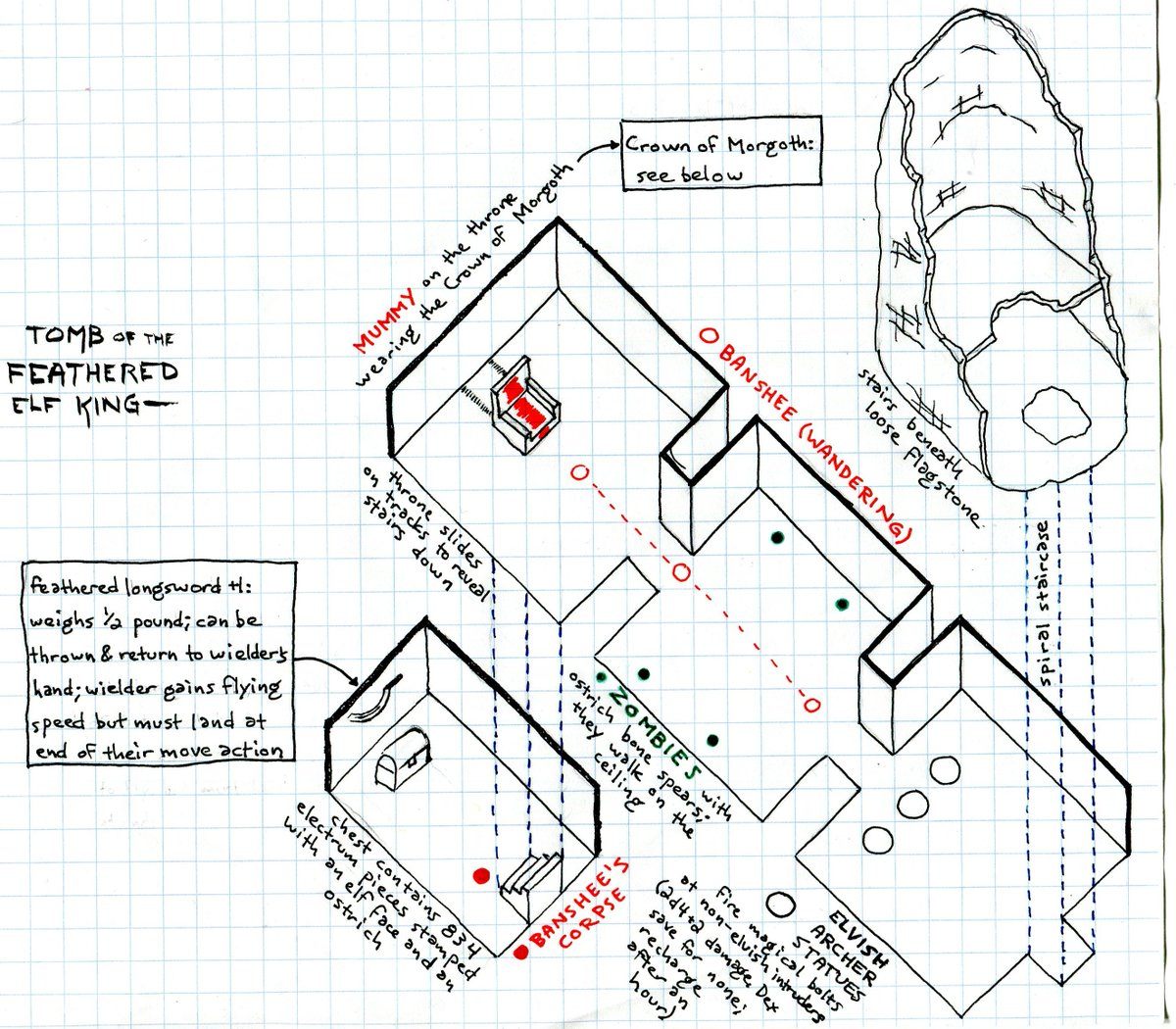
The Tomb of the Feathered Elves
“I love collaborative map-making, one-page dungeons, and maps that aren’t strictly representational. I hope that some of my maps evoke feelings alongside conveying information. My favorite inspiration is The Quiet Year by Avery Alder, a map-making RPG.” — Aaron King, Minneapolis, Minnesota
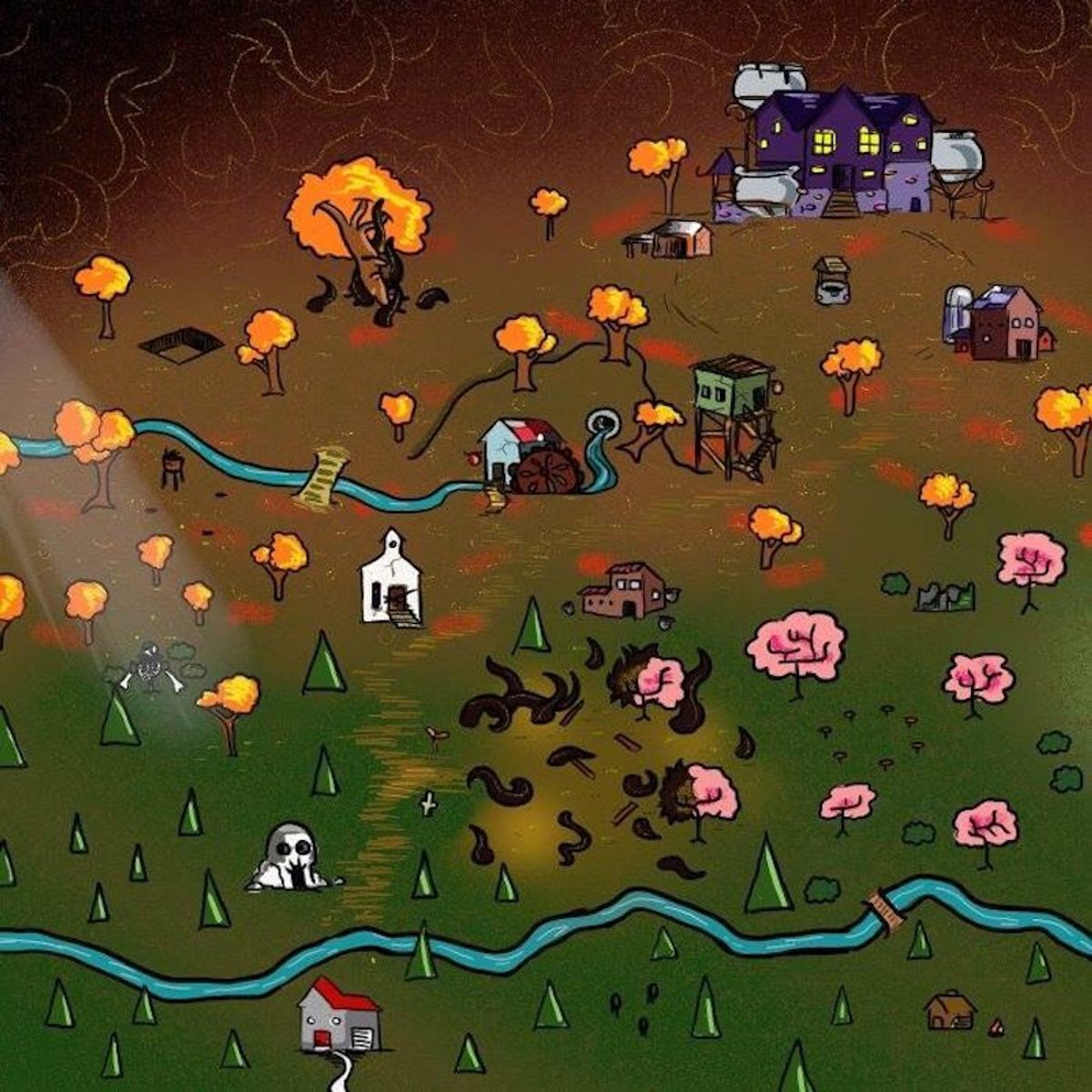
The Wimplewood
“The inspiration for this map actually came from some Halloween Where’s Waldo-style books I had growing up. This campaign we called “Inawoods” was played in the autumn of 2016, and featured some boy scouts trying to solve mysteries stemming from an abandoned Colonial-era town. The Wimplewood map is meant to be meandering, letting players encounter enemies and hazards in no particular order. Each time we played (ten sessions) the map would be updated to their discoveries, which were randomly determined as we went, and they would learn the rules to navigating the forest over time (i.e. ‘If you see the chapel, don’t go in; if you hear laughter, don’t look up; if you see a well, don’t look down.’)” — Benjamin Bagenski, Albany, New York

Forn-Dum
“Played D&D and always loved what is now called dungeon crawling so wanted to make a dungeon that would take players months to explore.” — Gene Merideth, Weston-super-Mare, England
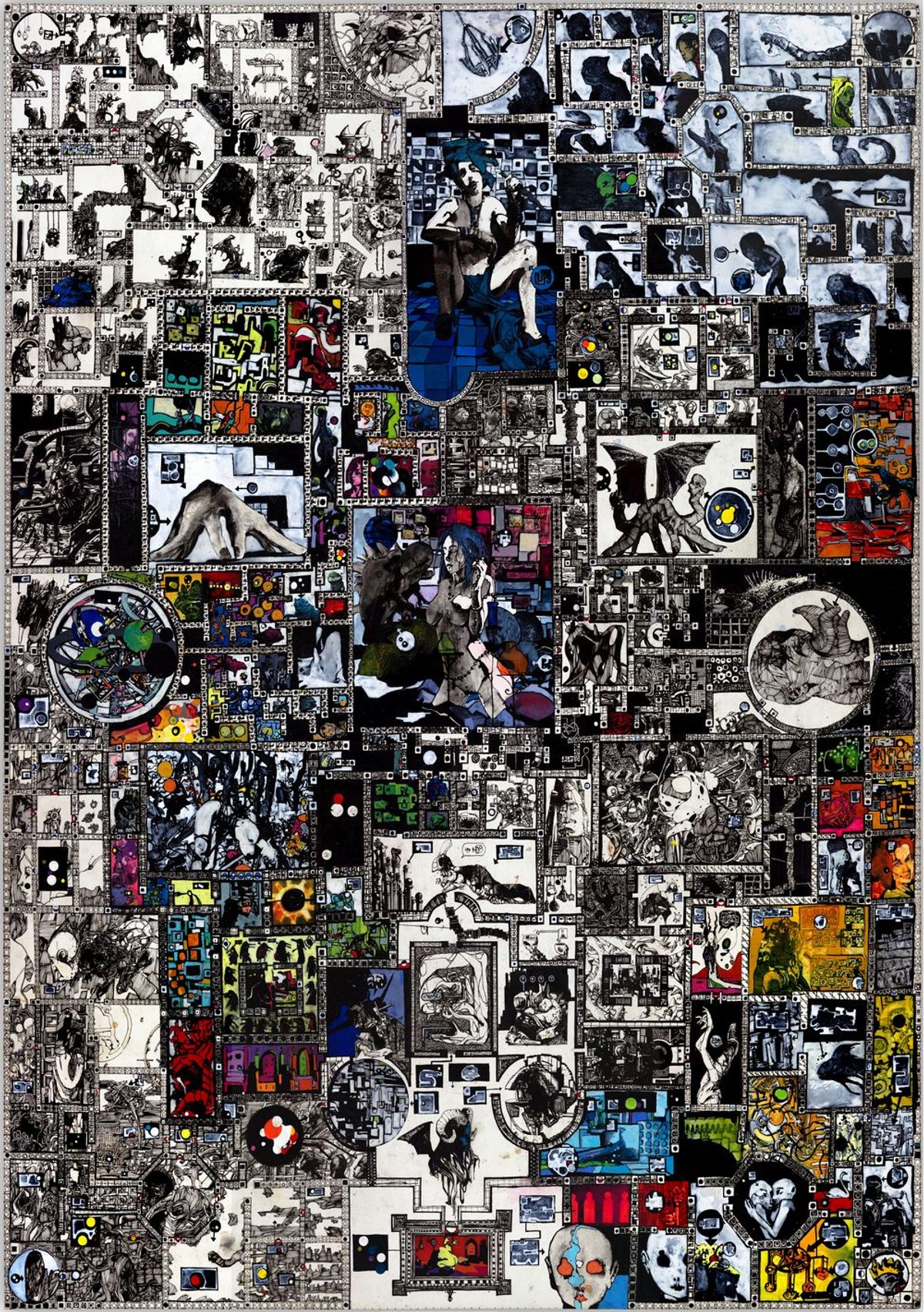
The Maze of the Blue Medusa
“I drew/painted The Maze of the Blue Medusa when I was stuck in Montreal for the winter. It was too cold to go out for a lot of reasons, and things were very tough at the time. I spent months on it. It’s a piece of art that I sold but also a fully-functional map. The little red and blue circles indicate secret and locked doors.” — Zak Smith, Los Angeles, California

Genial Jack
“I wanted a variant of the ‘dungeon inside a monster’ scenario and a unique town all at once.” — Jonathan Newell, Vancouver, British Columbia

Baerstun City
“The name is a shortening of ‘Barrows-stone,’ the name for the enormous brown rock in the Stone Quarter (lower left) that marks the grave of a dead demigod. The other city quarters are, clockwise, the Ocean Quarter, the Artisans’ Quarter, and the Noble Quarter (with keep, at center, and castle at top, in all white).
A few features worth noting are the temple to the Dwarven god of creation (hammer shape in the Artisans’ Quarter) and the gates that separate the quarters, which can be closed to complicate an invading army’s ability to advance, while guards in the keep and castle can move around quickly and directly atop the walls. Baerstun sits on a cliff overlooking the bay, and so a long shallow ramp with a switchback leads to the docks.
Baerstun was the center of a D&D adventure I started with friends when 4th Edition came out, and we’ve since transitioned to 5th edition but continue to play characters who live in that story-world. I do most of the DM’ing and spend nearly as much time world-building as my players do playing.” — J.R. Parsons
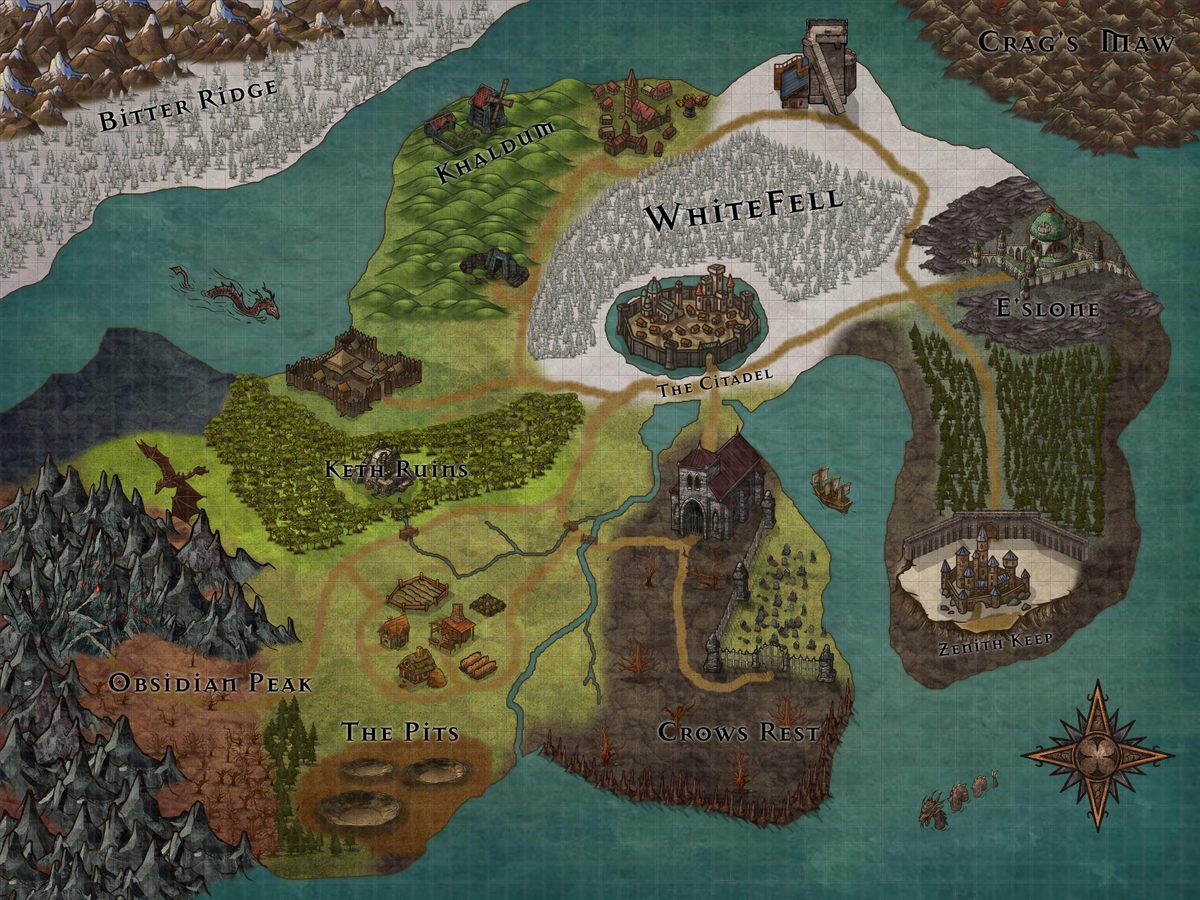
Laureth Ruined
“This is for a homebrew based on 5e. Laureth is a world broken after a celestial war. My inspiration is loosely Zelda: BOTW–based. There’s an overarching main quest and a ton of side quests for my troublemakers to get into. Under the main city, The Citadel, there is a rougeish network of catacombs that will work as a homebase.” — Travis Ash, Illinois



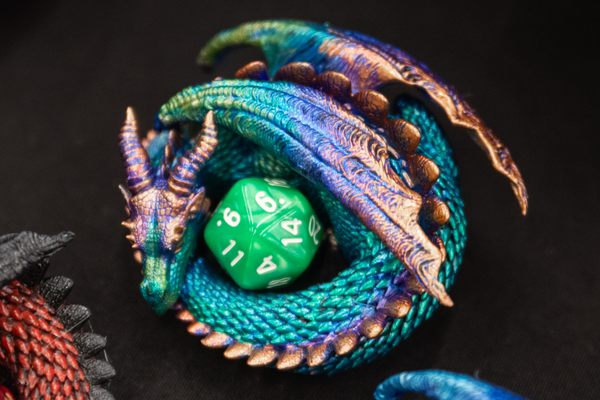










Follow us on Twitter to get the latest on the world's hidden wonders.
Like us on Facebook to get the latest on the world's hidden wonders.
Follow us on Twitter Like us on Facebook